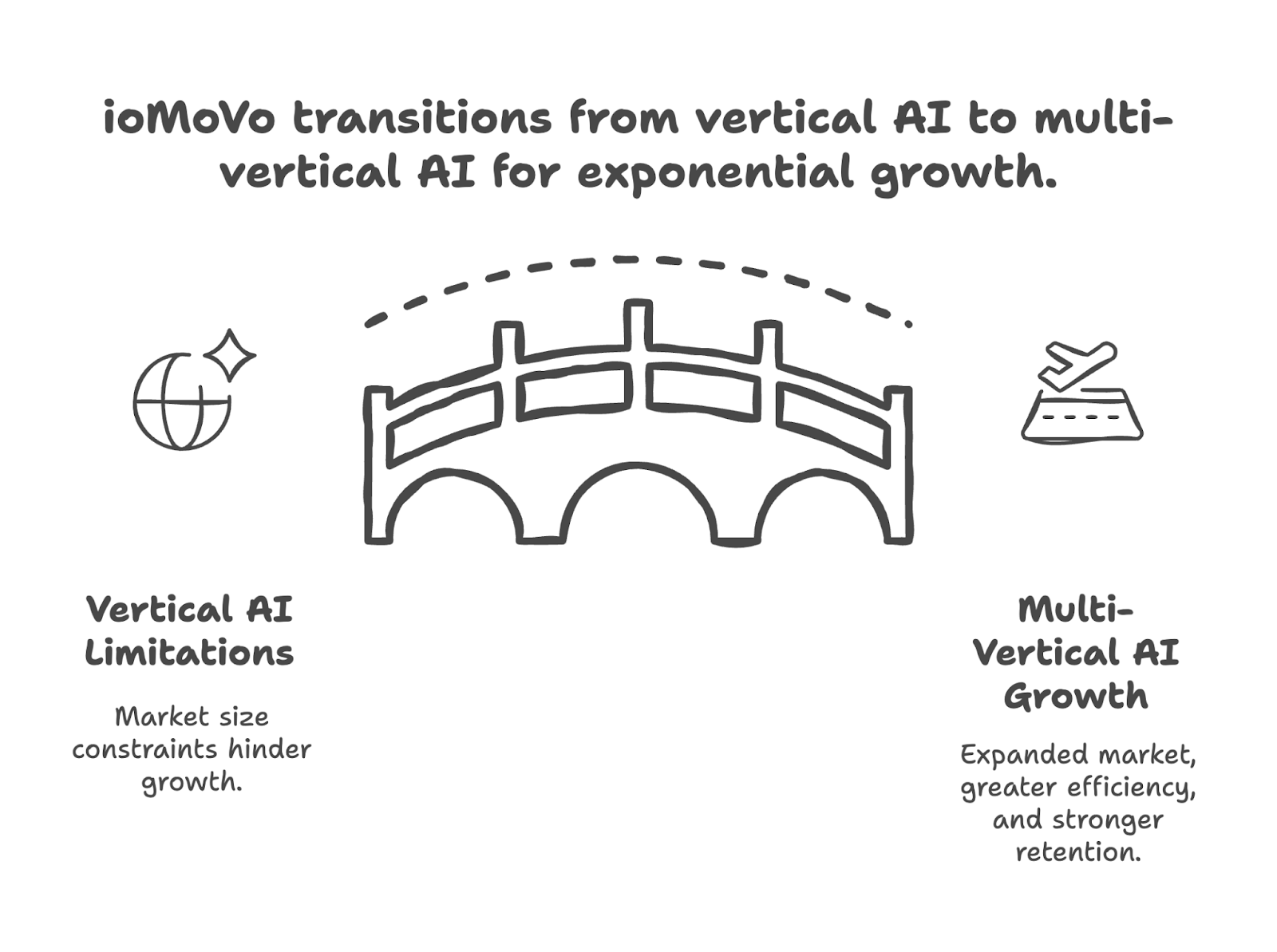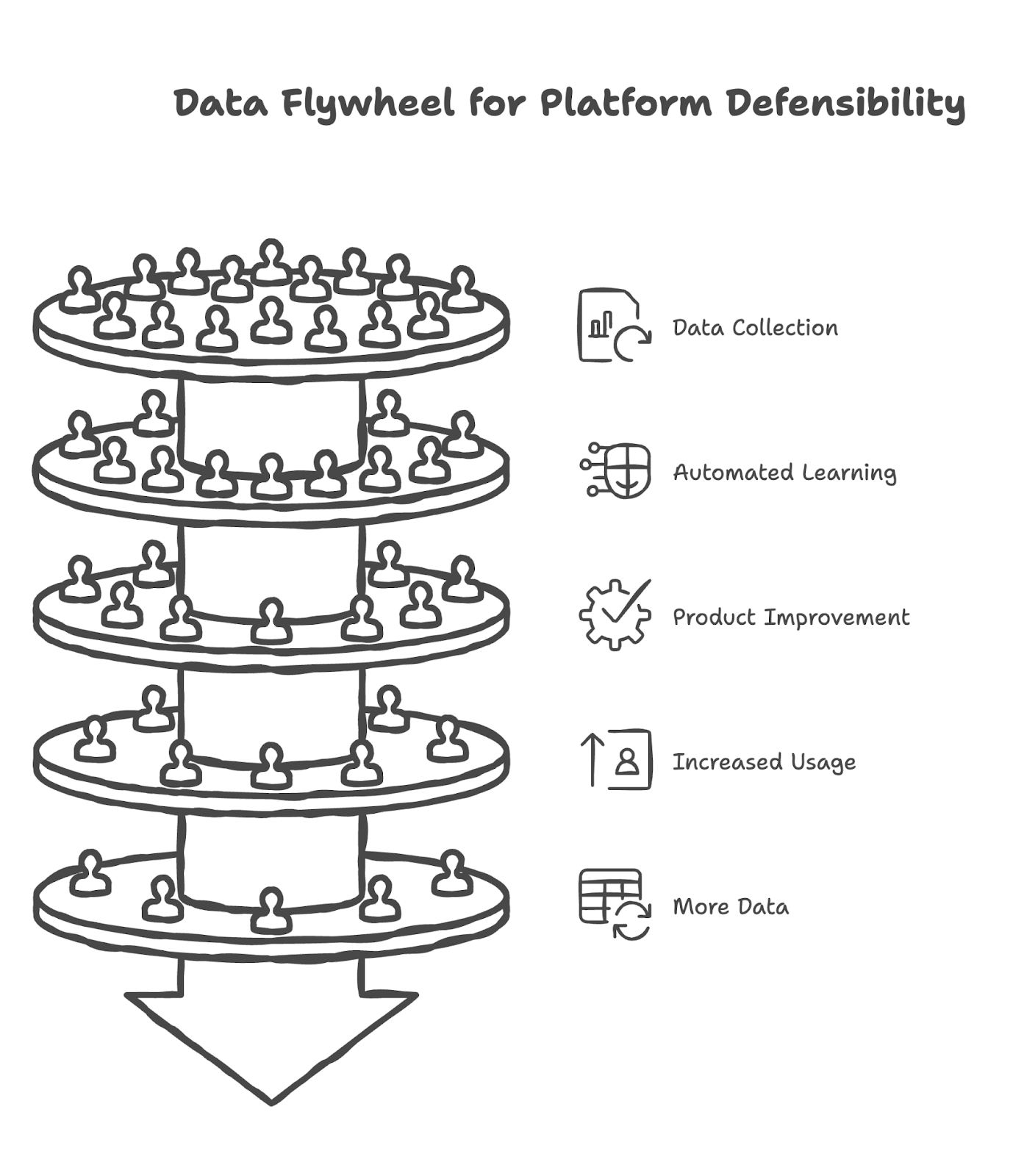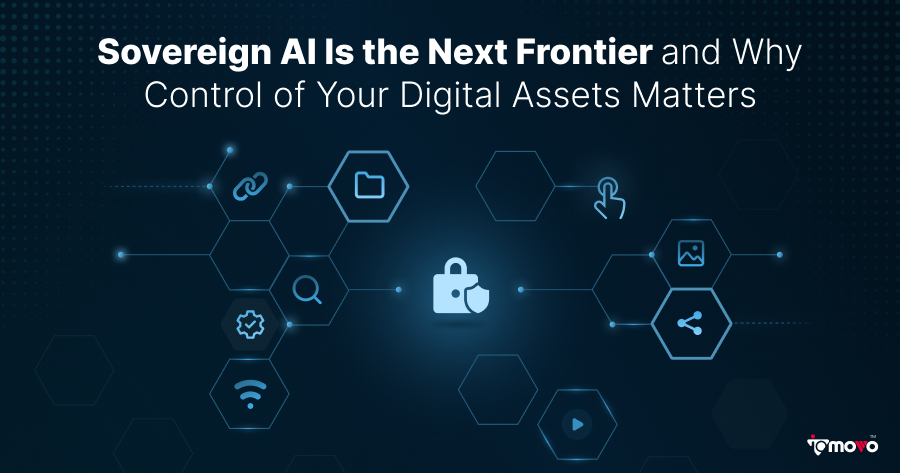The Strategic Moat: Building the Enterprise Brain for a Sovereign, AI-Powered Future
In the AI era, competitive advantage no longer comes from having the best model. It comes from building infrastructure that compounds value over time. While competitors chase feature parity, market leaders are engineering strategic moats that become more defensible with every user, every asset, and every workflow integrated into their systems.
Leading investors now evaluate AI companies by their data advantage, with top performers showing 35% accuracy improvements over competitors. The final 10% of performance in production AI systems requires 10x to 100x more work than a prototype. This gap creates lasting defensibility.
ioMoVo is a moat-building infrastructure layer for AI-native enterprises. Through federated architecture, intelligent data flywheels, and sovereign deployment, it creates the compounding defensibility that investors value and enterprises require.
Understanding why infrastructure matters more than algorithms starts with recognizing what makes AI platforms truly defensible.
Moats Aren't Built—They're Engineered
Traditional DAM platforms offer storage and organization. AI-first platforms engineer structural defensibility through four compounding layers:
- Data network effects that improve accuracy as usage scales
- Integration depth creating switching costs through embedded workflows
- Sovereign architecture enabling compliant deployment across jurisdictions
- Vertical intelligence adapting to industry-specific requirements
True moats emerge through process power, where production systems become hard to replicate. They grow through data effects from proprietary datasets. They strengthen through switching costs created by deep integration. And they compound through network effects, where value increases with users.
AI-native companies achieve 20% to 30% structural cost advantages through algorithmic coordination, replacing management overhead. This creates permanent margin expansion that competitors cannot match through incremental improvements.
Foundation models are now democratized. Real moats come from hardware components, proprietary data access, and integration within existing workflows. The integration layer becomes defensibility because competitors cannot cross this layer. Replication requires years of learning by doing.
Microsoft's $250B Azure commitment with OpenAI created a bidirectional dependency flywheel. OpenAI needs compute. Microsoft needs models. Together, they form an AI Moat that no single company can replicate.
The 33-country sovereign cloud footprint creates a geopolitical moat. Trust, audits, and institutional relationships have multi-year lead times. This timing advantage compounds as regulatory complexity increases.
ioHub's federated architecture connects Google Drive, SharePoint, Dropbox, AWS, and Azure into a unified system. This integration layer is what competitors struggle to replicate. Each connection point requires deep technical integration and institutional trust that takes years to build.
Platform moats compound. Better data improves algorithms. Better algorithms attract users. More users generate better data.
The cycle accelerates.
The Enterprise Brain Explained
The enterprise brain concept transforms static repositories into living intelligence systems. These systems learn, adapt, and compound organizational knowledge. Traditional DAM stores assets. Enterprise brains create institutional memory that becomes more valuable with use.
Think of it as an AI knowledge layer that sits above traditional content management systems. It can synthesize across corporate memory to draft plans, summarize meetings, and orchestrate workflows. Traditional systems suffer from organizational amnesia. Teams waste 30% of their time searching for past information.
The enterprise brain preserves institutional knowledge across chat, email, and connected workflows. This happens through three mechanisms:
- Continuous learning, where the system becomes smarter through automated pattern recognition from usage data
- Contextual intelligence that understands relationships between assets, projects, and decisions across time
- Proactive insights surfacing relevant knowledge before explicit requests based on the current context and past patterns
Data network effects drive this improvement. More users create more data. More data enables better algorithms. Better algorithms produce a better product. This attracts more users. The classic flywheel accelerates.
Google demonstrates this at scale. More people search. More data flows in. The system constantly refines performance. Personalized experiences drive more usage. Real data network effects require automated productization of learning, though. Periodic manual analytics do not create true flywheels.
ioAI combines traditional and generative AI models to create this living intelligence. The more your team uses it, the smarter your entire digital ecosystem becomes. This creates a time-based moat. The longer an organization uses the platform, the more valuable and irreplaceable it becomes.
Why ioMoVo Scales Across Industries
Vertical AI platforms specialized for single industries risk market size constraints. Multi-vertical platforms with industry-specific intelligence layers achieve domain expertise with platform scale.

Bessemer projects vertical AI market capitalization could grow 10x larger than legacy SaaS solutions. The vertical AI market will reach $115.4B by 2034, representing 24.5% annual growth. Industry analysts predict AI will account for a significant share of global computing resources by 2025.
Multi-vertical platform economics create three strategic advantages:
- Shared infrastructure means the core AI stack serves all verticals with development costs amortized across industries
- Cross-pollination enables insights from media to inform finance workflows, while healthcare patterns improve retail operations
- Network density increases as more total users across verticals accelerate model improvement
Examples span critical sectors. Media and broadcast need content rights management and broadcast workflows. Finance and insurance require regulatory compliance and data governance. The government demands environmental monitoring and public sector documentation. Healthcare needs HIPAA compliance and a medical imaging organization.
Vertical platforms offer deeper value, greater efficiency, and stronger customer retention than horizontal peers. Platform companies can expand the Total Addressable Market by adding verticals without rebuilding core infrastructure. This creates exponential rather than linear growth potential.
From media asset management to finance solutions, ioMoVo's core intelligence adapts to industry-specific requirements while maintaining a unified architecture. This approach captures vertical depth with horizontal scale.
Data Flywheels and Platform Defensibility
Not all data creates defensibility. True platform moats require automated feedback loops where user activity continuously improves the product without manual intervention. This creates exponential value acceleration.
Data becomes defensible through three requirements. First, exclusive or superior access to information that competitors cannot obtain. Second, automated productization that turns raw data into product improvements continuously. Third, continuous feedback loops where improvements drive more usage, which generates more data.
Data volume matters less than information coverage. Single edge cases add more information than many common examples. The key is capturing the right variance in user behavior and content patterns.

The flywheel mechanics follow a clear path:
- Data Collection where every user interaction generates training data
- Automated Learning as AI processes patterns without manual analysis
- Product Improvement through better algorithms enhancing user experience
- Increased Usage as improved products attract more users and activity
- More Data flowing in to accelerate the cycle
CB Insights demonstrates this flywheel at scale. User submissions provide data. They build classifiers. Algorithms improve. Better research attracts more users. More submissions follow. The loop compounds over the years.
Spotify shows the pattern in the consumer context. Users consume recommendations. Listening behavior informs curation and licensing decisions. Content aligns with user interests. More users join. Continuous refinement follows.
Flywheels differ from network effects structurally. Flywheels describe how companies execute operations. Network effects are inherent to the product itself. Network effects typically need hundreds of thousands of users to become effective.
The time advantage creates permanent defensibility. Year one brings linear improvement as data gets collected and patterns emerge. By year three, exponential advantages appear as compound learning creates 10x better predictions. Year five produces insurmountable leads. New entrants cannot match accuracy without equivalent data history.
ioPilot's natural language interface learns from every query. It understands how your team thinks about content. Each search becomes smarter than the last.
First-mover advantages in data flywheels compound. Late entrants face permanent accuracy disadvantages unless they acquire equivalent data history through acquisition.
Strategic Value Creation for the Next Decade
For investors and boards, the question has shifted. Does this platform have features? That matters less than whether the infrastructure creates compounding defensibility that widens over time. Strategic moats translate directly to margin expansion, pricing power, and exit multiples.
Private equity focus in 2025 centers on investments that drive material cost efficiencies with predictable AI applications. The shift moves toward the customer-facing half of the AI value chain. While VC fundraising declined 40% year over year, an unprecedented proportion of raised capital goes to AI investments. Quality now trumps quantity.
Value creation metrics tell the story:
- Revenue Growth: Companies with AI-driven processes achieve 2.5x higher revenue growth than peers
- Market Expansion: AI could contribute over $15 trillion to the global economy by 2030
- Margin Improvement: 20% to 30% structural cost advantages through AI-native architecture
- Infrastructure Validation: Over $1 trillion in 2025 AI infrastructure investments signal institutional confidence
- Sovereign Compliance: Over 10,000 enterprises annually commit to sovereign AI platforms
The infrastructure layer thesis gains validation. The $100B Global AI Infrastructure Investment Partnership brings together BlackRock, Microsoft, and MGX. Over $1 trillion in 2025 AI infrastructure investments flow to Stargate at $500B, Meta at $65B, Amazon at $75B, and Google at $100B. Infrastructure providers capture value regardless of which application layer wins.
The sovereign AI imperative drives enterprise intelligence decisions. GDPR, HIPAA, and the EU AI Act make compliance non-negotiable. Leading organizations with sovereign architecture show 40% operating a hybrid infrastructure with centralized control. They reduce reliance on global providers while achieving more than double the innovation gains of peers.
Federated AI architecture addresses this need directly. With 90% of enterprises running multicloud strategies, centralized AI fails governance requirements. ioMoVo's architecture combines sovereign deployment options, federated data access, and industry-specific intelligence. This is exactly what institutional investors value when evaluating platform companies.
The next decade belongs to platforms that control their entire stack. From federated data to sovereign deployment and vertical intelligence to vertical scalability, these companies capture value at multiple layers and command premium multiples.
The Infrastructure Imperative
Strategic moats in AI are architected, not accidental.
While competitors add AI features to existing products, market leaders build infrastructure layers that compound value. Federated architecture eliminates vendor lock-in. Data flywheels improve with usage. Sovereign deployment meets regulatory demands. Vertical intelligence scales across industries.
The question for investors and innovation leaders becomes clear. Are you building features, or are you engineering defensibility?
ioMoVo's platform represents the intersection of every defensible layer. Integration moats through federated architecture. Data moats through continuous learning. Sovereignty moats through flexible deployment. Vertical moats through industry-specific intelligence.
In the AI era, infrastructure is the most defensible asset a company can build.
¡Complete el siguiente formulario para comenzar!
Transform How Your Organization Manages Content
Unlock hidden value in your content with AI — faster discovery, better workflows, and organized collaboration
Ready to see how ioMoVo can fit your team?





.avif)

.svg)